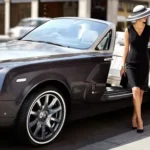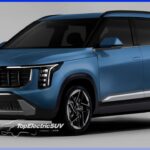The overall shape and design details that make up the original Mazda MX-5 Miata, Porsche 911 and Dodge Viper are so ingrained in our brains that it is hard to imagine that the characters of these cars look so different. road.
But they almost did. Almost every car on the road goes through a lengthy design process, which includes several competing proposals to combat it, the winner of which is determined and resolved before the last sign. Sometimes those early competing designs are radically different from the designs we are all familiar with.
Take a look at these examples of alternative offers for the seven known cars and say that the carmakers made the right choice.
Mazda MX-5 Miata
The history of the development of the original NA-code Miata began in the early 1980s, when Mazda began to study the idea of creating a classic version of the British sports cars of the 1960s and 70s, which have just left production.
Related: NA Miata has written a book about affordable entertainment, but it doesn’t seem to be available for $ 32,000.
![]()
But Mazda teams worked on three competing proposals: a front-wheel drive and front-wheel drive coupe, a mid-engine coupe (top picture) and a front-wheel drive, rear-wheel drive roadster, which was eventually chosen and changed. 1989 car.
Porsche 911
![]()
The Porsche 911’s layout, side window design, and faulty visibility are instantly recognizable, like the Nike swoosh, and the 911 gives a clear visual reference to the 356 coupes replaced and the Volkswagen Beetle that preceded the two.
![]()
But in the early stages of development of the 911, in the early 1960s, Porsche seemed to take a slightly different path. The roof of the Type 754 T7 was longer and had a larger 7.9-inch (200 mm) wheelbase that could carry four passengers, but the Porsche Ferry Fastback required a shape that forced it to redesign and return to two plus two locations. .
Mercedes 190
![]()
As we hasten to praise the E30 BMW 3-Series BMW, we forget to pay tribute to its rival, the Mercedes 190, which had a more sophisticated design with built-in bumpers and a narrow nose and tail that hid the car’s secrets. voluminous.
The straight line at the waist, extending from the nose to the tail, was a feature of the Mercedes design of the 1960s and 1990s, but in this picture, Benz decided to abandon the theme of a strange wavy waist and sloping trunk.
Dodge Viper
![]()
In 1996, the world greeted the second generation of Vipers, whose big news came just months after the first appearance of the Viper GTS coupe with a cool double-bubble roof reminiscent of the mighty Shelby Cobra Daytona of the 1960s.
What we didn’t know at the time was that a small team of Chrysler engineers developed a medium-engine proposal that modified as many of the available components as possible to create a third-generation Viper base. decade. The team gave a 50-page report to Chrysler President Bob Lutz and Design Manager Tom Gale, who unfortunately gave up on the idea, while the creative engineers behind it gave a metaphorical middle finger.
BMW Mini
Related: The BMW MINI turns 20 this week, but it may look like that
The classic Mini was still in production in the mid-1990s, when BMW’s Rover Group began serious research into how to replace it. Ideas range from futuristic mono-box cars to ultra-compact city cars, and competing teams have not seen the packaging or the car being retro. Which version of the Mini would you light up in green?
Toyota Supra
Since the mid-1990s, the Mk4 A80-generation Toyota Supras has had a much higher price in the classic market, but if Toyota decided to choose one of these alternatives, we would be ready to return the big money. industrial car designs?
Bugatti Veyron
Take a look at Walter de Silva’s early idea of the first Volkswagen-owned Bugatti, the “amazing koala” face, and the many, including the C-shaped side entrances that make it the final design of the Veyron (below). irrigated shape, but then full force was applied to Chiron (pictured below).
![]()
![]()
Thank you very much @ forgotten-concepts An Instagram account to make it easier to avoid negative copyright notices by posting these pictures. If you like to see pictures of strange design studies and maybe dozens of other cars, this is definitely an account worth subscribing to.






